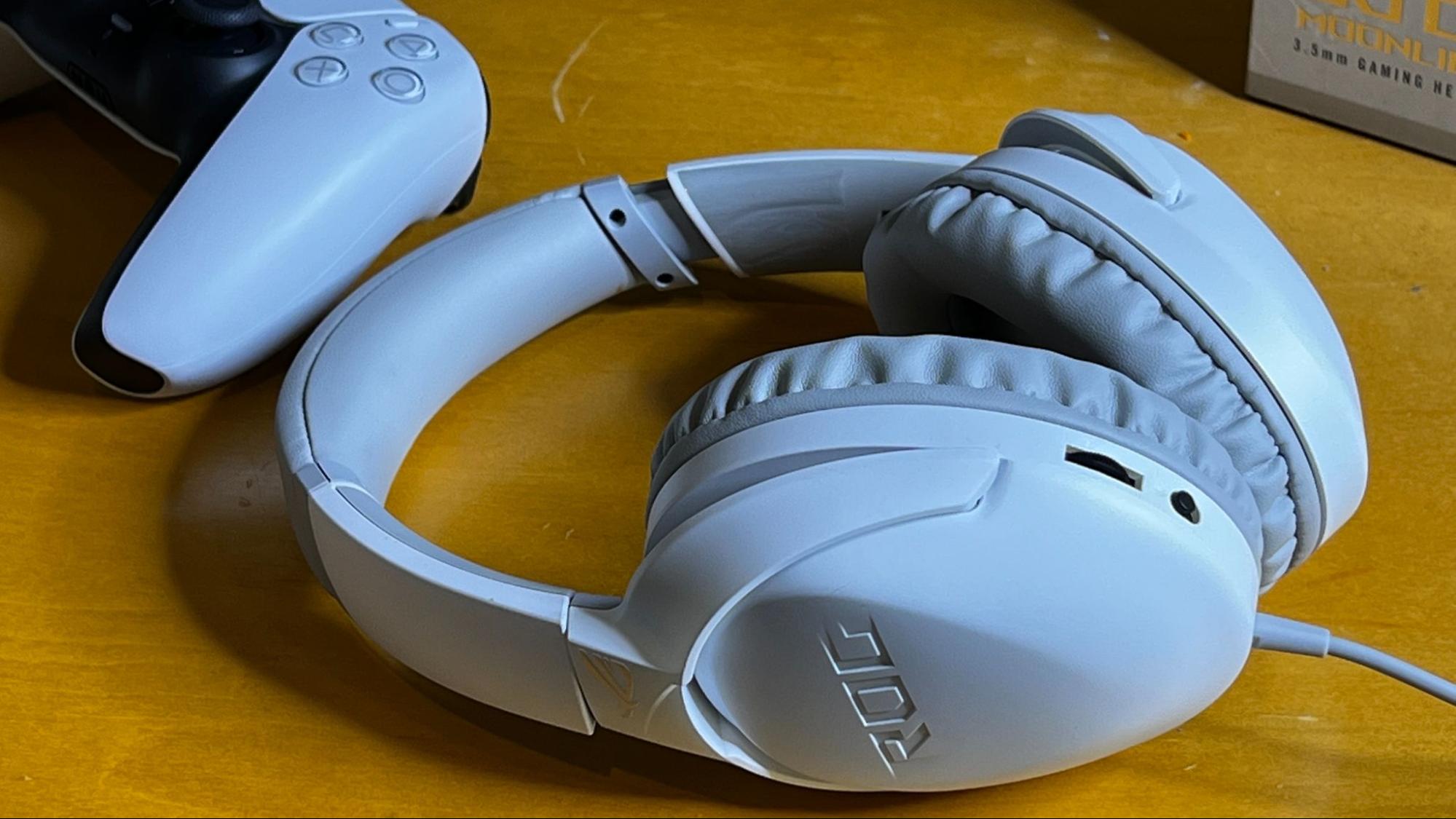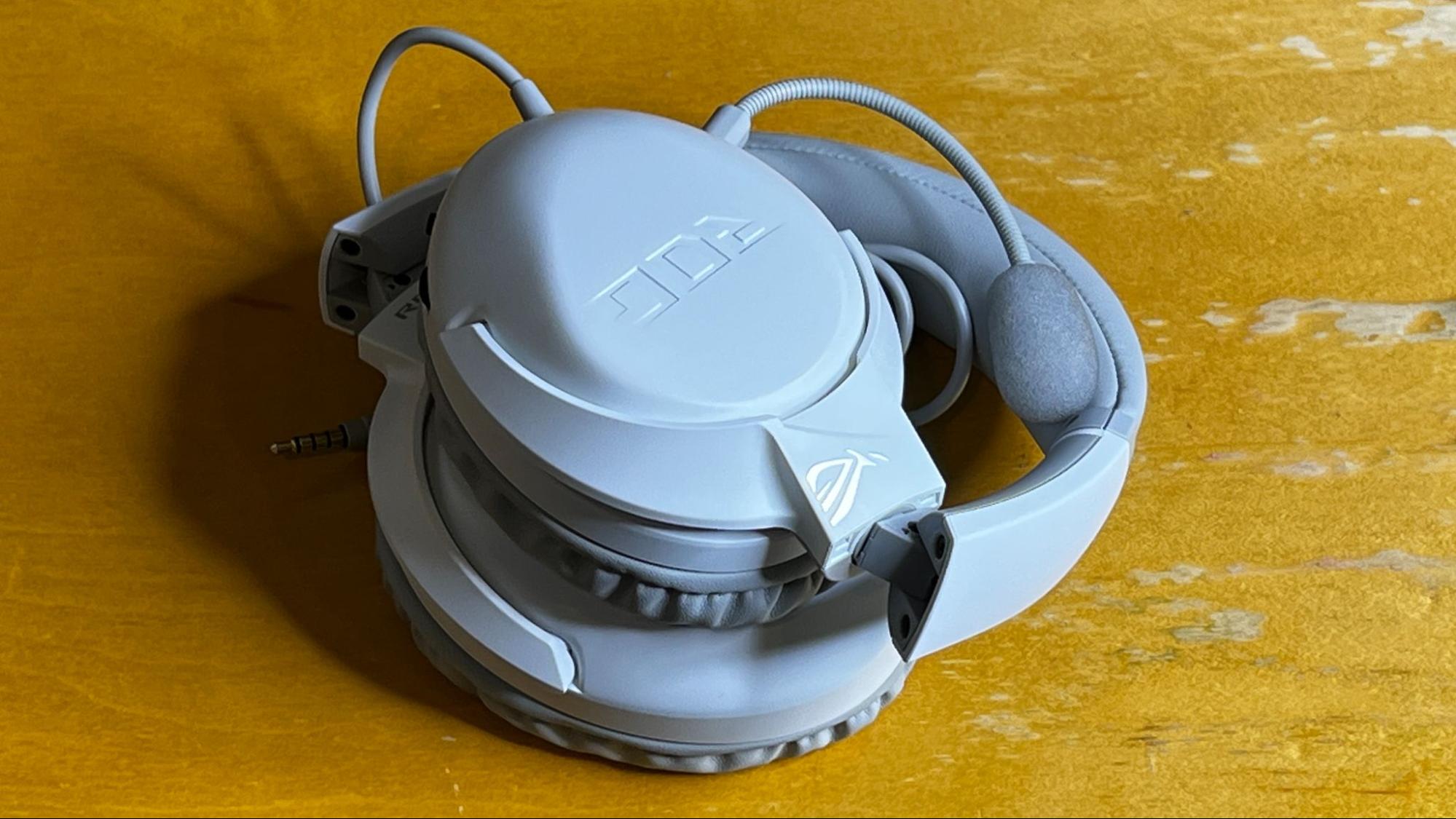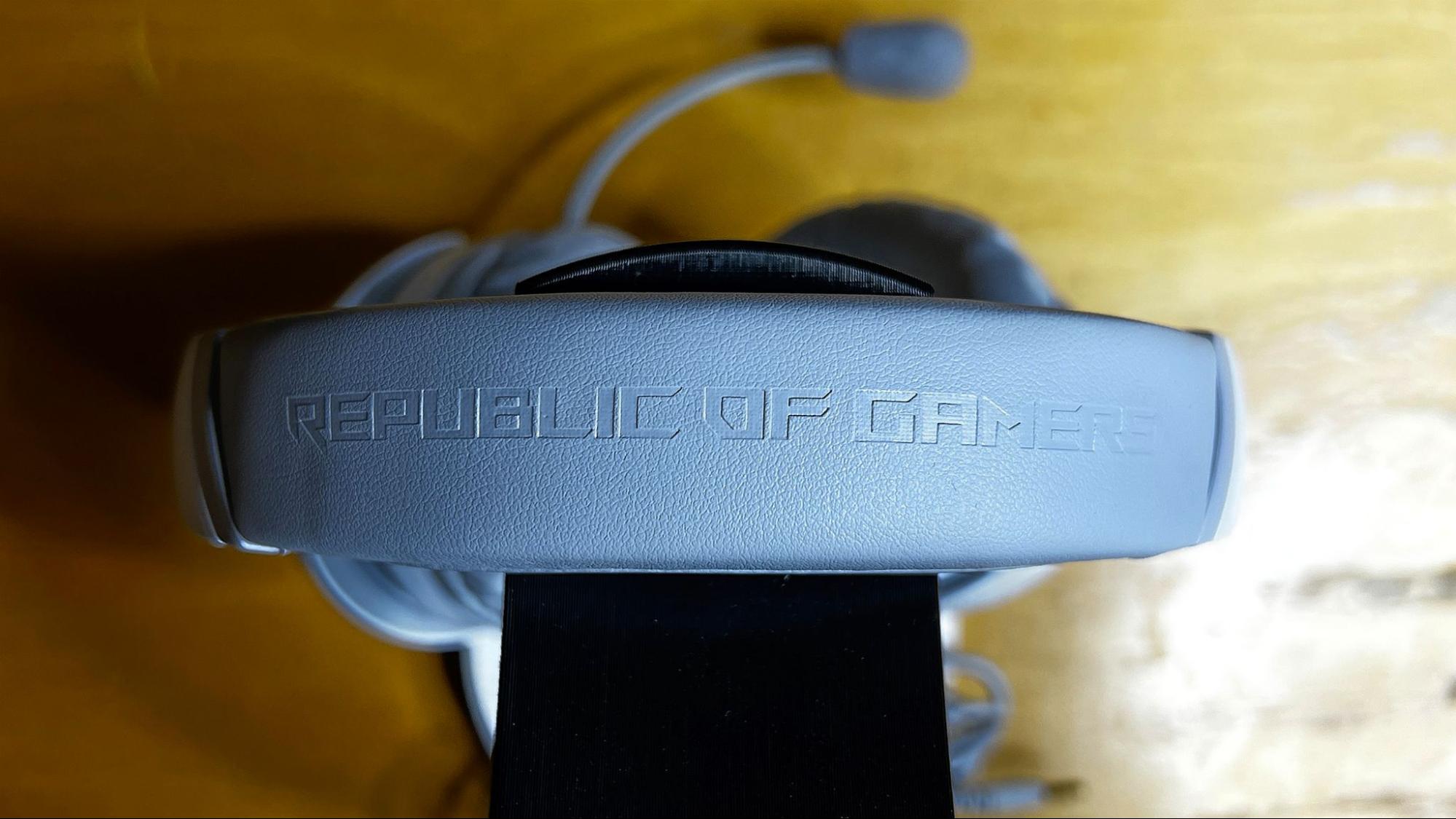Tom's Hardware Verdict
The ROG Strix Go Core headset is inexpensive, comfortable and lightweight. Its sound quality is pretty average, but the collapsible design and stylish looks help it stand out.
Pros
- +
+ Lightweight and comfortable
- +
+ Collapsible cups allow compact storage
- +
+ Stylish design
Cons
- -
Non-detachable cable
- -
No software included for 3D/equalizer
Why you can trust Tom's Hardware
If 2021’s dystopian mood has you tired of a desk filled with gothic black gaming peripherals, Asus has a solution with the Rog Strix Go Core Moonlight White gaming headset. Its color matches with a full line of Asus ROG Moonlight White products, which includes the Zephyrus G14 and G15 notebooks, Scope NX TKL keyboard, Impact II mouse and Cetra II Core wired earbuds. Whether you just want to brighten things up or you want your gaming setup to look at home in an industrial clean room, this headset is just one step you can take to add some (subdued) color to your gaming setup.
The ROG Strix Go Core is similar in design to the wireless ROG Strix Go 2.4, but lacks that headset’s wireless and USB connectivity options. However, these 3.5mm-only cans cost just $79.99, vs. $199.99 for the wireless version.
This wired headset is inexpensive, comfortable and lightweight, and it offers good audio that doesn’t suffer in any key areas but doesn’t stand out either. It’s not best-in-class in sound quality like you’ll find on the best gaming headsets, but some gamers will find that the modern style more than makes up for the lacking substance here on the audio front.
Asus ROG Strix Go Core Specs
| Driver Type | 40mm neodymium magnet |
| Impedance | 32 Ohms |
| Frequency Response | 20 - 40,000 Hz |
| Microphone Type | Unidirectional boom mic |
| Connectivity Options | 3.5mm cable |
| Cables | 3.5mm (3.9 feet/1.2m) |
| Weight | 0.56 pounds/252g |
| Lighting | None |
| Software | None |
| Extra | 3.5mm extension cable (4.5 feet/1.4m) |
Design and Comfort




The “Go” in the name implies portability, and the ROG Strix Go Core delivers on that front. It’s lightweight at just 0.56 pounds, and the cups fold flat and twist inwards so that you can easily fit them in a carry case. (Unlike the wireless Go 2.4 version, no case is included.)
Sadly, the 3.5mm cable isn’t removable, so you’ll have to wrap it up with the attached Velcro tie to travel neatly with it. It’s a shame it’s not detachable, as it means the headset will be useless should a pet, kid or other sinister element damage the cable. The bundled 3.5mm extension cable splits the single TRSS connector into dedicated microphone and headset plugs.
The tasteful moonlight white design is accented by light gray on the headband and leatherette earcup covers. Overall, it’s the antithesis of the blingy RBG that you’ll find on plenty of competing gaming headphones, but there still remain numerous subtle nods to the Republic of Gamers branding throughout the headset. Specifically, there are ROG logos embossed on the earcups, and nearly invisible “Republic of Gamers” running atop the headband.
The earcups are quite comfortable, with the swivel mechanism allowing them to securely fit against your head, whatever its shape. The leatherette on the earcups is backed by a lightweight foam, rather than the thicker, denser and heavier memory foam found on many headsets. This helps keep pressure down on your ears, while still maintaining a good seal for audio isolation. The leatherette covering can be a bit hotter than cloth, though, and it wasn’t as comfortable as the cloth-edged Epos H3 Hybrid during lengthy gaming sessions.
Get Tom's Hardware's best news and in-depth reviews, straight to your inbox.
Controls are minimal, with a microphone mute switch and a volume dial on the left earcup, along with the detachable microphone. Though more elaborate volume controls can be cool, as with the touch controls on the Creative SXFi Air Gamer, I appreciated the simplicity and precision of the Rog Strix Go Core’s classic analog dial at the bottom of the cans.
Audio Performance
I put the ROG Strix Go Core’s gaming capabilities to the test using the beta of the upcoming Battlefield 2042, as well as a variety of other titles including Watch Dogs: Legion, Far Cry 6, and IL-2 Sturmovik. Overall, sounds were clear across the spectrum, from low gunshots to high-pitched alarms, as well as more subtle noises like screeching alarms, distant footsteps and bystander conversations.
As you’d hope with gaming headphones, the bass is strong here, but it’s not overblown or accentuated to the point of distraction. Nearby explosions were dramatic enough to make me jump, and the roar of a Spitfire’s engine in IL-2 was immersive. Highs aren’t lost, though, and subtle environmental sounds are clear even at medium volume.
The headset doesn’t include surround audio software, so I tested it with Dolby Atmos for Headphones on the PC and Xbox Series X, and Tempest 3D on the PS5. The effect was more subtle than with some hardware-based 3D audio solutions, but was definitely noticeable, with the soundscape seeming to spread out more fully around me than before. Overall, gaming audio quality is good, but the 40mm drivers don’t have quite the detail of the larger 53mm drivers in the Fnatic React+, which do a better job of separating sounds in complex soundscapes.
Music sometimes feels like an afterthought with gaming headphones, but the ROG Strix Go Core handles it surprisingly well. As you’d expect with the accentuated bass, hip hop tunes like Kanye West’s Hurricane sounded accurate, with both the background beat and the vocals sounding clear and sharp. On the other end of the audio spectrum, the instruments in Pink Floyd’s mostly instrumental The Endless River were all clear and distinct. While all the musical styles I tried sounded good overall, the audio richness and detail didn’t compare to my audiophile-oriented Sennheiser 3.0 cans—but those cost $299 and aren’t geared for gaming.
There’s no noise cancellation, but isolation is strong overall, with only the loudest environmental noises leaking in, and even then only when the volume was pretty low. When my son was trying these, I couldn’t hear the Call of Duty: Black Ops Cold War audio blasting despite sitting about six feet from him.
Microphone


The detachable omnidirectional cardioid microphone includes a pop filter, and has a flexible but stiff arm that holds its position well in use. It lacks the AI noise-cancelling feature of the Go 2.4 model, but it did a good job of focusing on my voice and only picked up the loudest background noises. Even with it very near to my noisy mechanical keyboard, keypresses were barely detectable.
Overall, my voice sounded clear and accurate, and the mic wasn’t as overly sensitive or picky about being positioned just right as some other headsets, such as the Razer Barracuda X.
Features and Software
As is often the case with less-expensive wired headsets, there’s no bundled software here, so you’ll be left to your device’s and/or game’s capabilities as far as adjusting equalization and adding 3D surround audio.
Bottom Line
The ROG Strix Go Core is not leading in any area, but it’s also relatively inexpensive. It has a more understated style than many alternatives, particularly if you team it with other Asus Arctic White peripherals. It offers excellent portability, a comfortable build and performance that won’t blow you away, but won’t leave you disappointed either.
The Fnatic React+ is a serious rival to the ROG Strix Go Core, as it boasts larger 53mm drivers that push slightly clearer sound, as well as an even better microphone and hardware-based 7.1 surround sound support, all for just $20 more. The React+ doesn’t look as nice as the Asus set, though, and the ROG Strix Go Core matches nicely with white game controllers.

